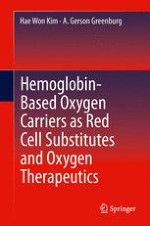2013 | OriginalPaper | Buchkapitel
13. Recombinant Octameric Hemoglobins as Resuscitation Fluids in a Murine Model of Traumatic Brain Injury Plus Hemorrhagic Shock
verfasst von : Xianren Wu, Nancy T. Ho, Tong-Jian Shen, Vincent Vagni, David K. Shellington, Keri Janesko-Feldman, Tsuey Chyi S. Tam, Ming F. Tam, Patrick M. Kochanek, Chien Ho, Virgil Simplaceanu
Erschienen in: Hemoglobin-Based Oxygen Carriers as Red Cell Substitutes and Oxygen Therapeutics
Verlag: Springer Berlin Heidelberg
Aktivieren Sie unsere intelligente Suche, um passende Fachinhalte oder Patente zu finden.
Wählen Sie Textabschnitte aus um mit Künstlicher Intelligenz passenden Patente zu finden. powered by
Markieren Sie Textabschnitte, um KI-gestützt weitere passende Inhalte zu finden. powered by
